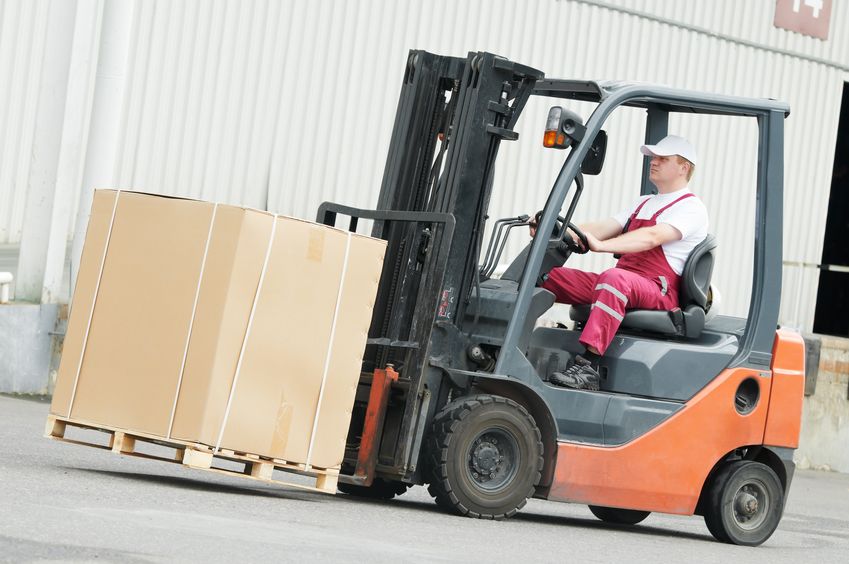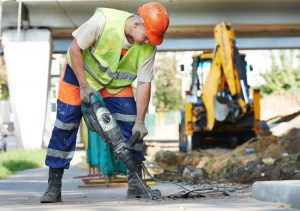By Stephen Hudson. Last Updated 3rd June 2025. This guide is dedicated to dangerous machinery at work injury claims. All employers have a duty of care to keep us safe in the workplace. Should they fail in that duty, it could lead to an accident and someone suffering an injury. In such cases, a personal injury claim might be a suitable course of action.
The Health and Safety at Work Act etc. 1974 makes it the responsibility of employers to ensure that all machines used in the workplace are properly maintained. It also imposes a duty on them to remove or repair defective work equipment, and to take all necessary measures to ensure that the employees who operate these machines are protected from the risks of accidents to a reasonable degree.
Despite this, accidents at work related to dangerous machinery occour. These accidents can be caused by an employer’s negligence, inadequate training of the operators, inadequate personal protective equpiment and the use of faulty equipment.
If you have sustained injuries caused by dangerous machinery while at work, this guide will give you a clear insight into the steps required to recover compensation from your employer. We’ll also give you an insight into the personal injury claims process, what No Win No Fee agreements are and how we can help you.
While reading this guide if you have any questions or would like to proceed with a claim, our team of friendly advisers is on hand to offer you free legal advice. To speak to them, simply:
- Call us on 0800 073 8804
- Contact us online
- Or chat with us now using the live chat feature, bottom right
Read on to discover more about claiming due to suffering an injury from unsafe machinery.

Select a section:
- Claiming For An Injury Caused By Dangerous Vehicles At Work.
- Dangerous Machinery At Work Injury Claims Involving Faulty Equipment.
- Other Common Causes Of Dangerous Machinery Accidents At Work.
- Claiming For A Dangerous Machinery Accident As An Employee.
- Assessing The Severity Of An Injury Caused By Dangerous Machinery At Work
- What To Do If You Have Suffered An Injury Caused By Dangerous Machinery At Work.
- No Win No Fee Dangerous Machinery At Work Injury Claims
- Dangerous Machinery – Work Accident Compensation Payouts
Claiming For An Injury Caused By Dangerous Vehicles At Work
Hundreds of people are killed or critically wounded every year due to accidents involving dangerous vehicles and moving equipment at work. Dangerous vehicles at work in this context can refer to any moving equipment, including cranes, forklifts, bulldozers and motor vehicles. It can also refer to accidents involving vehicles and equipment on the work premises, such as in the car park or near a road. There will be health and safety guidelines that dictate how the employer should handle such situations.
Due to this equipment’s volatile nature, the law requires that employees who operate this equipment are kept safe. Employers are expected to ensure that their workers are properly trained on using dangerous vehicles at work and giving them proper instructions and adequate monitoring during work. A failure to do this may mean that the employer has acted in a negligent manner and is liable for any accidents that may occur.
Furthermore, a work equipment risk assessment is required to be performed by your employer. This is so that any hazards can be identified and removed or reduced.
Dangerous Machinery At Work Injury Claims Involving Faulty Equipment
The use of faulty or defective equipment at work can lead to accidents and injuries. Electric equipment which is not fitted with proper insulation, for instance, can cause electrical shocks, electrocution or burns, while poorly maintained equipment may cause accidents due to worn-out or faulty parts. Faulty equipment in the workplace can include:
- Broken equipment.
- Equipment with missing, faulty or disabled parts.
- Equipment that has undergone temporary repairs and still failed to prevent the accident from happening.
- Equipment with slow or malfunctioning switches.
According to the Provision and Use of Work Equipment Regulations 1998 (PUWER), workplace equipment needs to be safe for use and properly maintained. The equipment also needs to be correctly installed and accompanied by the necessary and appropriate protective control measures to avoid machinery/equipment accidents.
PUWER also requires that employers get rid of equipment or parts of equipment that may increase hazard risks relating to plant and equipment use. Your employer following these regulations should result in them removing any unsafe machinery in the workplace.
Another useful piece of legislation is the Employer’s Liability (Defective Equipment) Act 1969. This provides protection to employees injured during the course of their employment as a result of a defect in equipment.
If you’ve been injured by dangerous machinery at work and believe your employer should have repaired or removed the equipment, get in touch with us for free legal advice.
Other Common Causes of Dangerous Machinery Accidents at Work
Apart from using faulty or poorly maintained equipment, dangerous machinery accidents can still be caused by a number of other reasons. Accidents can include (but are not limited to):
- Contact Accidents: This can happen when you come in contact with sharp or dangerous objects due to your employees’ failure to provide the right safety protection.
- Ejector Accidents: Accidents caused by flying objects which could hit you and cause you to sustain serious injuries.
- Entrapment Accidents: Getting your clothing or parts of your body (such as your fingers, hair or legs) caught in the moving part of a machine.
- Impact Accidents: Getting hit by moving equipment and sustaining injuries as a result.
Some machines should have safety guards to protect from these incidents above, such as covers over blades or screens to prevent chippings from flying back at you. However, such safety features can become damaged over time, and if not properly maintained, can lead to the risk of injury.

Claiming For A Dangerous Machinery Accident As An Employee
According to the Health and Safety at Work etc Act of 1974, the employer holds a duty of care to ensure that all workplace machines are safely and properly used.
Employers are expected to carry out a regular risk assessment of all equipment and give priority to necessary repairs. Therefore, you may be able to claim if you’ve been injured due to a work equipment risk assessment not being performed within a sufficient time period. Employers are also expected to provide employees with relevant protective gear and ensure that the gear is always worn by employees assigned to operate the equipment.
To file a claim for compensation from your employer, you would need to be able to show proof that your employer’s negligence caused your injury. This means that you must be able to prove that your employer failed to take the necessary steps to protect you from the accident. You may also need to prove that your employer could foresee the likelihood of an accident happening but still failed to take adequate steps to protect you from the accident.
In certain scenarios, the accident might not entirely be your employer’s fault but caused by defective or poorly manufactured equipment. You may need to make a third party defective product claim against the manufacturer or supplier of the equipment in such cases.
Assessing Injuries In Dangerous Machinery At Work Claims
The type, extent and severity of the injury sustained will be put into consideration by the court when trying to decide on a suitable amount to be awarded as compensation.
Injuries sustained from dangerous machinery while at work can be classified as severe, moderately severe or minor.
- Severe injuries include death, fractured bones, amputation, loss of limbs, crush injuries or any other injuries that cannot be completely healed or reversed.
- Moderately severe injuries are equally serious but could be significantly reversed with the right treatment and rehabilitation. They include burn injuries, hearing loss, vision loss, brain damage, mental health problems or musculoskeletal disorders.
- Bruises, cuts, scratches, swelling, grazes, eye injuries, and sprains are examples of minor injuries.
As a general rule, the more severe the injury sustained, the higher the compensation amount that would likely be awarded. Read on to learn more about how you could be affected by serious injuries caused by unsafe machinery.
What To Do If You Have Suffered An Injury Caused By Machinery at Work
When you are considering claiming, one of the most important components of any case is evidence. To claim compensation, you have to prove that your employer was negligent and directly or indirectly responsible for your accident. It is imperative that you take the following steps following a dangerous machinery accident at work, as it can help you gather enough evidence to back up your claim.
- Record the Event: It helps to get photo and video evidence of the accident with a time stamp on it. This should be done as soon as possible after the accident. You should take photos of the equipment that caused the accident, the environment within which the accident occurred, and the injuries you sustained from the accident.
- Get Names and Testimony of Witnesses: Make sure you record the names of those employees or other people who witnessed the accident.
- Make a Formal Report: Formally report the accident to your employer and record your report.
- Keep Receipts and Evidence of Treatment: Don’t forget to keep records of all financial expenses made for the treatment and rehabilitation costs.
- Document all Other Losses: If you lost your job or suffered any other tangible or intangible losses due to the accidents, you should keep records of that too.
- Get Expert Evidence: Obtain a medical assessment of the type, severity and implications of your injury. You can get this from your doctor. We can also help you arrange for a local medical professional to evaluate you.
- Talk to a Solicitor: After gathering all the necessary evidence and documents required to prove your case, you should talk to a solicitor. A solicitor will be able to carry out a professional review of your case and provide the necessary legal advice and support needed to make your claim.
What Is The Accident At Work Time Limit?
It is important to understand that there is a three-year time limit for making claims, and this starts from the day of the accident (or the day you receive a diagnosis). This is why we recommend speaking to a legal professional as soon as possible.
The rules regarding the time limit for starting a personal injury claim are set out in the Limitation Act 1980. The time limit can work differently to normal under certain circumstances. If, for instance, the victim is below the age of 18, then the time limit for claiming will be frozen until the day of the victim’s 18th birthday. It will also be frozen if the victim lacks the mental capacity to make decisions on their own behalf.
In either circumstance, the victim will be unable to start a claim on their own, but it may be possible for a claim to be started on the victim’s behalf by a representative known as a litigation friend. The litigation friend could be someone close to the victim, such as a parent, guardian or friend.
How Much Time Does It Take To Settle Dangerous Machinery Claims?
There is no set time limit for how long it takes to settle dangerous machinery claims. This period can be impacted by certain factors, such as:
- The nature and complexity of your injuries.
- Whether your employer accepts or denies liability for your injuries.
- The strength of your evidence: If you already have strong evidence, you won’t have to devote more time to collecting proof.
- Negotiations for your compensation amount.
- Whether your claim goes to court.
An experienced workplace injury solicitor would be able to provide you with a rough timeline for your dangerous machinery claim. While it isn’t compulsory to hire a solicitor to claim compensation, we recommend that you delegate the claims process to an expert. If you choose to work with one of our workplace accident solicitors, they could help you in the following:
- Collecting evidence.
- Assessing the strength of your claim.
- Calculating and negotiating your compensation amount.
- Communicating with the defending party.
- Simplifying complex legal terms.
- Making sure you’re aware of the time limit for your claim.
Get in touch with our advisors now for more information about our services. If your claim is found to be eligible, you will be connected to one of our capable solicitors.
No Win No Fee Dangerous Machinery At Work Injury Claims
If you’re eligible to claim for an injury caused by a machine, a Legal Expert solicitor could potentially offer their services on a No Win No Fee basis.
If you enter into a Conditional Fee Agreement, a type of No Win No Fee, with a solicitor, this would confirm how you would pay them for their services. No Win No Fee lawyers don’t charge any up-front fees or ongoing expenditures for their services. Therefore, this can be beneficial if you’re concerned about the financial risk of paying a solicitor without a guarantee of a settlement at the end of the process.
If your claim succeeds, you will pay a success fee, capped under The Conditional Fee Agreements Order 2013, to your solicitor. You won’t pay any solicitor fees if they are unable to help you claim compensation.
Our solicitors can work under this type of agreement and may be able to help you. Get in touch at any time for free legal advice and to check your eligibility for us to work with you.
Dangerous Machinery – Work Accident Compensation Payouts
Compensation for successful dangerous machinery at work injury claims can include general and special damages. General damages are included to compensate you for the pain and suffering your injuries have caused.
Those who value general damages for a work accident claim may consult the Judicial College Guidelines (JCG). This publication includes compensation brackets for many different injuries. The table below includes some of the compensation amounts listed in the JCG for different injuries that could occur due to dangerous machinery at work. Take note that the first entry is not taken from the JCG.
| Injury | Severity | Amount |
|---|---|---|
| Multiple Severe Injuries And Special Damages | Severe | Up to £1,000,000+ |
| Brain Damage | Very Severe | £344,150 to £493,000 |
| Moderate (i) | £183,190 to £267,340 | |
| Back Injury | Severe (i) | £111,150 to £196,450 |
| Moderate (i) | £33,880 to £47,320 | |
| Neck Injury | Severe (ii) | £80,240 to £159,770 |
| Chest Injury | (b) Traumatic Injury To Chest, Lung(s) And/Or Heart | £80,240 to £122,850 |
| Knee Injury | Severe (i) | £85,100 to £117,410 |
| Ankle Injury | Severe | £38,210 to £61,090 |
| Shoulder Injury | Severe | £23,430 to £58,610 |
Your work accident compensation may also include special damages, which can cover the financial losses that your accident and injuries have caused.
For instance, if you’ve needed to take an extended period of leave from work, there may be a loss of earnings you could recoup as special damages. Other related expenses, such as the cost of prescriptions or mobility aids aiding your recovery, may also be covered under special damages.
To claim special damages, you’ll need to provide certain documents as evidence, such as bank statements and wage slips. Get in touch with our advisors today if you would like to learn more about how much your work accident claim may be worth.
Call for Free Advice and to Start a Claim
Don’t lose out on your opportunity to get compensation. A quick chat with a personal injury solicitor from our team will get you up to speed on your rights and the prospects of successfully pursuing an accident at work claim.
Our advisers are always available to chat so if you need to ask a few questions or want to start a claim today, please call us on 0800 073 8804.
You can also use our contact form by clicking here or using our live chatbox in the right corner.
More Guides On Dangerous Machinery at Work
HSE – Why is machinery safety important?
Moving machinery can be hazardous and cause injuries in many different ways, sharp edges; workers can be struck and injured by moving parts. There are more things listed on this HSE link.
HSE FAQ On PUWER
The Health and Safety Executive has put together a very useful guide on PUWER, which you can read here.
An HSE Guide To The Supply and Design of Machinery In The UK
A helpful guide on the legal requirements for machinery in the UK.
Below, you can find lots of guides on claiming compensation for a workplace accident:
- Manual handling claims
- How to claim for a ladder accident
- How to get compensation for a cut finger at work
- Scaffolding accident claims
- Warehouse accident claims
- Defective work equipment cases
Thank you for considering our guide about dangerous machinery at work injury claims.







